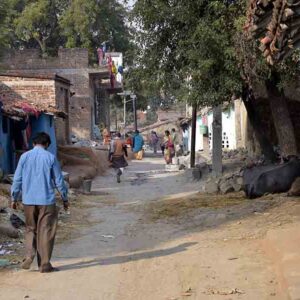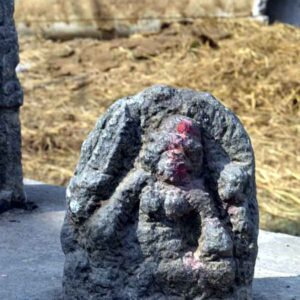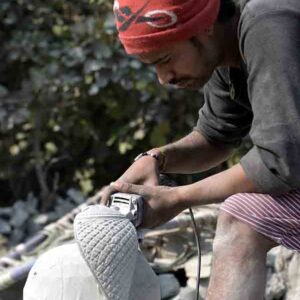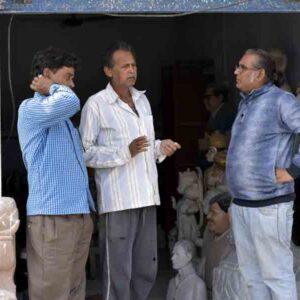Patharkatti in Gaya district of Bihar, is known as Village of Stone Carvers. It has rich legacy of stone craft and has been the traditional stoneware centre in Bihar. It is also famous for its blue-black pot stone from which artisans craft Buddhist icons, images and household articles like the pestle, the mortar kharal (medicine grinder).
Traditionally the work was limited to the Gaud Brahmins who migrated from Rajasthan on invitation of Rani Ahilyabai of Indore. This craft was limited to the Gaud Brahmins till recently when in 1950-60’s Upendar Maharathi started a training centre to involve people from other communities.
Since its inception many local people have taken training from Ravindera Nath Gaud and the craft at its peak was spread in as many 10 villages. Presently the craft is limited to four villages and the biggest clusters are at khukari, Patharkatti and Tenbigha.
Here are some photographs of Patharkatti photo documentation project by Folkartopedia in December, 2018;
Photo Archives
Patharkatti, Village of Stone Carvers of Bihar
Patharkatti, Village of Stone Carvers of Bihar
Photo documentation: Tanay Pathak
December 25, 2018
Gallery images: 34
© folkartopedia
Audio-Visual archives I Audio archives I Video archives I Photo Archives
Other links:
पत्थरकट्टी,1940–1970: परंपरा और परिस्थितियों के बीच फंसा पाषाण शिल्प
पत्थरकट्टी: पाषाण शिल्प, परंपरागत डिजाइन और कच्चा माल के स्रोत
पाषाण शिल्पियों का विशिष्ट गांव, पत्थरकट्टी: संक्षिप्त इतिहास और सामाजिक तानाबाना
Disclaimer:
The opinions expressed within this article or in any link are the personal opinions of the author. The facts and opinions appearing in the article do not reflect the views of Folkartopedia and Folkartopedia does not assume any responsibility or liability for the same.
Folkartopedia welcomes your support, suggestions and feedback.
If you find any factual mistake, please report to us with a genuine correction. Thank you



































